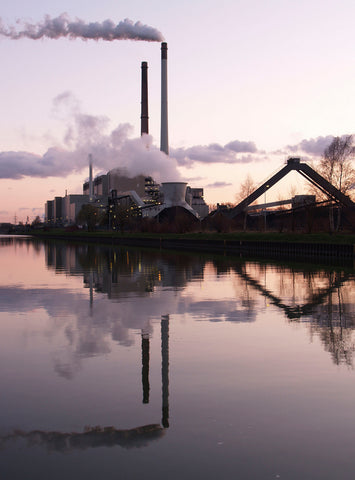Make Way for More Clean Energy: Old, Toxic Coal Plants are Shutting Down in the U.S.

The U.S. is taking bigger steps towards more clean energy. In order to comply with new EPA regulations known as the Mercury and Air Toxics Standards, a number of coal plants will be shutting down. According to Treehugger, already this year some 4,600 megawatts of coal has been pulled from the grid, with another 7,700 to follow by year’s end—a total of 12.3 gigawatts or about 1/3 of all coal shut downs since 2010.
“This year's closures represent about 4% of installed U.S. coal capacity and will make up a third of nationwide coal plant retirements between 2010 and 2015,” SNL reports.
While this is good news for the environment and human health, the closings slow down after that.
“The pace of retirements eases in 2016, when units with one-year MATS compliance extensions finally close. Next year, nearly 7,300 MW of coal-based power will shut down. Retirements continue to taper off after that, with less than 7,000 MW slated between 2017 and 2022,” reports SNL. But says Treehugger, “Hopefully by then more will be added to the list.”
And even though things may be slowing down for taking coal off the grid, compliance with MATS means 46,000 megawatts of coal removed from production in the U.S. (by 2022).
“And the coal plants that will remain behind, while far from green, at least won't be quite as bad as the ones that are going away,” reports Treehugger. “The average age of units closing between now and 2022 is 56 years, meaning that many are less efficient and have fewer environmental controls than the surviving coal fleet.”
So what will be replacing coal? “Of the nearly 26,400 MW of coal capacity closed or closing between 2015 and 2022, about 40% will be converted to burn other fuels, mainly natural gas,” reports SNL. “A little over 11,000 MW of the retiring units will switch to gas, with a much smaller 335 MW converting to burn oil and 58 MW to biomass.”
And there’s more good news, according to SNL. There could be even more coal closures after the EPA delivers its final ruling for reduced carbon emissions in the power sector. “The agency's Clean Power Plan for existing plants sets state-specific greenhouse gas intensity reduction targets that are estimated to cut emissions by 30% from 2005 levels by 2030.”
Image via eutrophication&hypoxia
Leave a comment
Comments will be approved before showing up.


